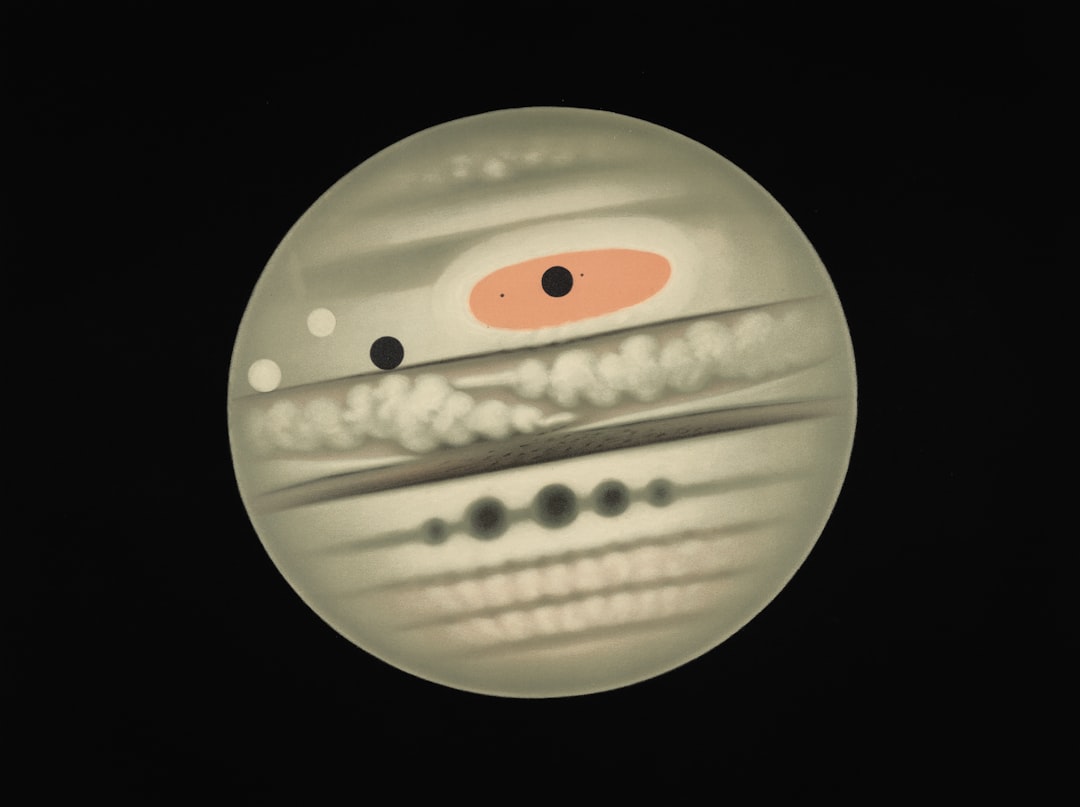Spherical harmonics are mathematical functions that arise in the solution of problems involving spherical symmetry. They are particularly useful in fields such as physics, engineering, and computer graphics, where they help describe complex shapes and phenomena on a spherical surface. These functions can be thought of as the three-dimensional analogs of the two-dimensional Fourier series, allowing for the representation of functions defined on the surface of a sphere.
The spherical harmonics are denoted by \(Y_{lm}(\theta, \phi)\), where \(l\) and \(m\) are integers that define the degree and order of the harmonic, respectively, while \(\theta\) and \(\phi\) represent the polar and azimuthal angles. The significance of spherical harmonics extends beyond mere mathematical curiosity; they serve as a powerful tool for analyzing various physical systems. For instance, they can be employed to model gravitational fields, electromagnetic fields, and even quantum states in atomic physics.
Their orthogonality properties make them particularly advantageous for decomposing complex functions into simpler components, facilitating easier analysis and interpretation. In essence, spherical harmonics provide a framework for understanding phenomena that exhibit spherical symmetry, making them indispensable in many scientific disciplines.
Key Takeaways
- Spherical harmonics are mathematical functions used to represent the spherical symmetry of a function or a potential field.
- Spherical harmonics play a crucial role in understanding Jupiter’s atmosphere by helping scientists analyze the planet’s complex weather patterns and atmospheric dynamics.
- Scientists use spherical harmonics to study Jupiter’s magnetic field, which provides insights into the planet’s interior structure and its interaction with the solar wind.
- Spherical harmonics are utilized to map Jupiter’s gravity field, allowing scientists to understand the planet’s mass distribution and internal dynamics.
- The mathematical basis of spherical harmonics lies in their ability to represent functions on the surface of a sphere, making them essential for studying planetary phenomena like Jupiter’s interior structure and dynamic atmosphere.
The Role of Spherical Harmonics in Understanding Jupiter’s Atmosphere
Jupiter’s atmosphere is a dynamic and complex system characterized by its swirling clouds, powerful storms, and intricate weather patterns. Spherical harmonics play a crucial role in modeling these atmospheric phenomena, allowing scientists to analyze the planet’s atmospheric dynamics with greater precision. By representing the atmospheric pressure, temperature, and wind patterns using spherical harmonics, researchers can capture the essential features of Jupiter’s atmosphere while filtering out noise and irrelevant details.
This mathematical approach enables a clearer understanding of how various atmospheric processes interact and evolve over time. Moreover, the application of spherical harmonics to Jupiter’s atmosphere aids in the identification of large-scale features such as the Great Red Spot—a massive storm that has persisted for centuries. By decomposing the atmospheric data into its harmonic components, scientists can track changes in the storm’s size, shape, and intensity over time.
This analysis not only enhances our understanding of Jupiter’s weather systems but also provides insights into the underlying physical processes driving these phenomena. As a result, spherical harmonics serve as a vital tool for unraveling the mysteries of Jupiter’s atmospheric behavior.
How Spherical Harmonics Help Scientists Study Jupiter’s Magnetic Field

Jupiter possesses the strongest magnetic field of any planet in our solar system, a feature that has intrigued scientists for decades. The study of this magnetic field is essential for understanding not only Jupiter itself but also its interactions with its moons and the solar wind. Spherical harmonics are instrumental in modeling Jupiter’s magnetic field by providing a mathematical framework to represent its complex structure.
By analyzing data collected from spacecraft missions such as Galileo and Juno, researchers can use spherical harmonics to derive models that accurately depict the magnetic field’s strength and orientation at various altitudes.
This visualization is crucial for understanding how the magnetic field interacts with charged particles in Jupiter’s magnetosphere and how it influences the planet’s auroras.
Furthermore, by comparing different harmonic models over time, researchers can detect changes in the magnetic field that may indicate underlying geological or atmospheric processes. Thus, spherical harmonics not only enhance our comprehension of Jupiter’s magnetic field but also contribute to broader studies of planetary magnetism.
Using Spherical Harmonics to Map Jupiter’s Gravity Field
| Data/Metric | Value |
|---|---|
| Planet | Jupiter |
| Method | Spherical Harmonics |
| Gravity Field Mapping | Yes |
| Accuracy | High |
| Resolution | Fine |
Mapping Jupiter’s gravity field is another area where spherical harmonics prove invaluable. The gravity field of a planet is influenced by its mass distribution, which can vary due to factors such as atmospheric pressure changes, ocean currents, and geological features. By employing spherical harmonics to analyze gravitational data collected from spacecraft like Juno, scientists can create detailed models of Jupiter’s gravity field that reveal insights into its internal structure and composition.
The use of spherical harmonics allows researchers to decompose the gravity field into its constituent parts, making it easier to identify variations caused by different geological features or atmospheric conditions. For instance, anomalies in the gravity field may indicate the presence of dense materials beneath the surface or variations in atmospheric mass distribution. By studying these anomalies, scientists can infer information about Jupiter’s interior structure and its evolution over time.
Consequently, spherical harmonics serve as a powerful tool for mapping not only Jupiter’s gravity field but also for enhancing our understanding of planetary formation and dynamics.
The Mathematical Basis of Spherical Harmonics
The mathematical foundation of spherical harmonics is rooted in solutions to Laplace’s equation in spherical coordinates. This equation describes how scalar fields behave under certain conditions and is fundamental in various areas of physics. The solutions to Laplace’s equation yield a set of orthogonal functions defined on the surface of a sphere—these are the spherical harmonics.
The orthogonality property ensures that each harmonic function can be treated independently when analyzing complex systems. Mathematically, spherical harmonics can be expressed as products of associated Legendre polynomials and exponential functions involving complex numbers. This formulation allows for efficient computation and manipulation of these functions in various applications.
The coefficients associated with each harmonic function can be determined through techniques such as least squares fitting or Fourier analysis, enabling researchers to reconstruct complex functions from their harmonic components. Thus, the mathematical basis of spherical harmonics not only underpins their theoretical significance but also facilitates their practical application across diverse scientific fields.
Spherical Harmonics and Jupiter’s Interior Structure

Understanding Jupiter’s interior structure is a challenging endeavor due to the planet’s thick atmosphere and immense size. However, spherical harmonics provide a means to probe beneath the surface by analyzing gravitational data collected from orbiting spacecraft. By modeling Jupiter’s gravity field using these mathematical functions, scientists can infer details about its internal composition and layering.
The gravitational field reflects variations in mass distribution within Jupiter, which can be linked to different layers such as the metallic hydrogen core, surrounding liquid hydrogen layer, and gaseous atmosphere above. By examining how these layers contribute to the overall gravity field through spherical harmonics, researchers can develop models that reveal insights into the planet’s formation history and thermal evolution. This approach not only enhances our understanding of Jupiter but also contributes to broader studies on gas giants and their internal structures.
Spherical Harmonics and Jupiter’s Dynamic Atmosphere
Jupiter’s atmosphere is characterized by its dynamic nature, with rapid changes occurring due to complex interactions between various atmospheric components. Spherical harmonics serve as an effective tool for capturing these dynamics by allowing scientists to represent wind patterns, temperature distributions, and cloud formations on a global scale. By decomposing atmospheric data into harmonic components, researchers can analyze how different factors influence weather patterns and storm development.
The ability to model Jupiter’s dynamic atmosphere using spherical harmonics also facilitates comparisons with Earth’s weather systems. While both planets exhibit turbulent atmospheres, their underlying mechanisms differ significantly due to variations in size, composition, and rotation rates. By studying these differences through harmonic analysis, scientists can gain insights into fundamental atmospheric processes that govern planetary climates across the solar system.
The Challenges of Applying Spherical Harmonics to Jupiter’s Complex Environment
Despite their utility, applying spherical harmonics to study Jupiter presents several challenges due to the planet’s complex environment. One significant issue is the presence of noise in observational data collected from spacecraft missions. Atmospheric turbulence, radiation interference, and instrument limitations can introduce errors that complicate harmonic analysis.
Researchers must employ sophisticated filtering techniques to mitigate these effects while ensuring that essential features are preserved. Another challenge lies in accurately representing non-spherical features within Jupiter’s atmosphere and magnetic field using spherical harmonics. While these functions excel at modeling smooth variations on a sphere’s surface, they may struggle with abrupt changes or localized phenomena such as storms or vortices.
To address this limitation, scientists often combine spherical harmonic analysis with other modeling techniques that account for non-spherical features or utilize higher-order harmonics for greater resolution.
Spherical Harmonics and the Search for Water on Jupiter
The search for water on Jupiter is an ongoing area of research that holds significant implications for understanding the planet’s composition and potential habitability of its moons. Spherical harmonics play a role in this quest by helping scientists analyze data related to water vapor distribution within Jupiter’s atmosphere. By employing harmonic analysis on spectroscopic data collected from spacecraft instruments, researchers can identify signatures indicative of water presence.
Additionally, understanding water distribution is crucial for studying cloud formation processes on Jupiter. The presence of water vapor influences cloud dynamics and precipitation patterns within the atmosphere. By utilizing spherical harmonics to model these processes, scientists can gain insights into how water interacts with other atmospheric components and contributes to weather phenomena on the planet.
Future Applications of Spherical Harmonics in Planetary Science
As technology advances and new missions are launched to explore our solar system further, the applications of spherical harmonics in planetary science are expected to expand significantly. Future missions targeting gas giants like Jupiter will likely generate vast amounts of data that require sophisticated analytical techniques for interpretation. Spherical harmonics will continue to play a pivotal role in modeling gravitational fields, magnetic fields, and atmospheric dynamics.
Moreover, as researchers develop more refined algorithms for processing observational data using spherical harmonics, they will be able to extract increasingly detailed information about planetary interiors and atmospheres. This progress will enhance our understanding not only of Jupiter but also of other celestial bodies within our solar system and beyond. The potential applications extend beyond planetary science; they may also find relevance in fields such as astrophysics and exoplanet studies as scientists seek to understand diverse planetary environments across different star systems.
The Promise of Spherical Harmonics in Unveiling Jupiter’s Mysteries
In conclusion, spherical harmonics represent a powerful mathematical tool that has significantly advanced our understanding of Jupiter—a planet shrouded in mystery due to its immense size and complex environment. From modeling its dynamic atmosphere to probing its interior structure and magnetic field, these functions have provided invaluable insights into various aspects of this gas giant. As researchers continue to refine their techniques and explore new avenues for applying spherical harmonics, they stand poised to unveil even more secrets hidden within Jupiter’s depths.
The promise of spherical harmonics extends beyond mere academic inquiry; it holds implications for broader planetary science endeavors aimed at understanding not only our solar system but also exoplanets orbiting distant stars.
Spherical harmonics play a crucial role in understanding the gravitational field of celestial bodies, including Jupiter. These mathematical functions help scientists model the planet’s complex gravitational field, which is essential for interpreting data from spacecraft missions. For a deeper dive into the application of spherical harmonics in planetary science, you can explore a related article on this topic by visiting
